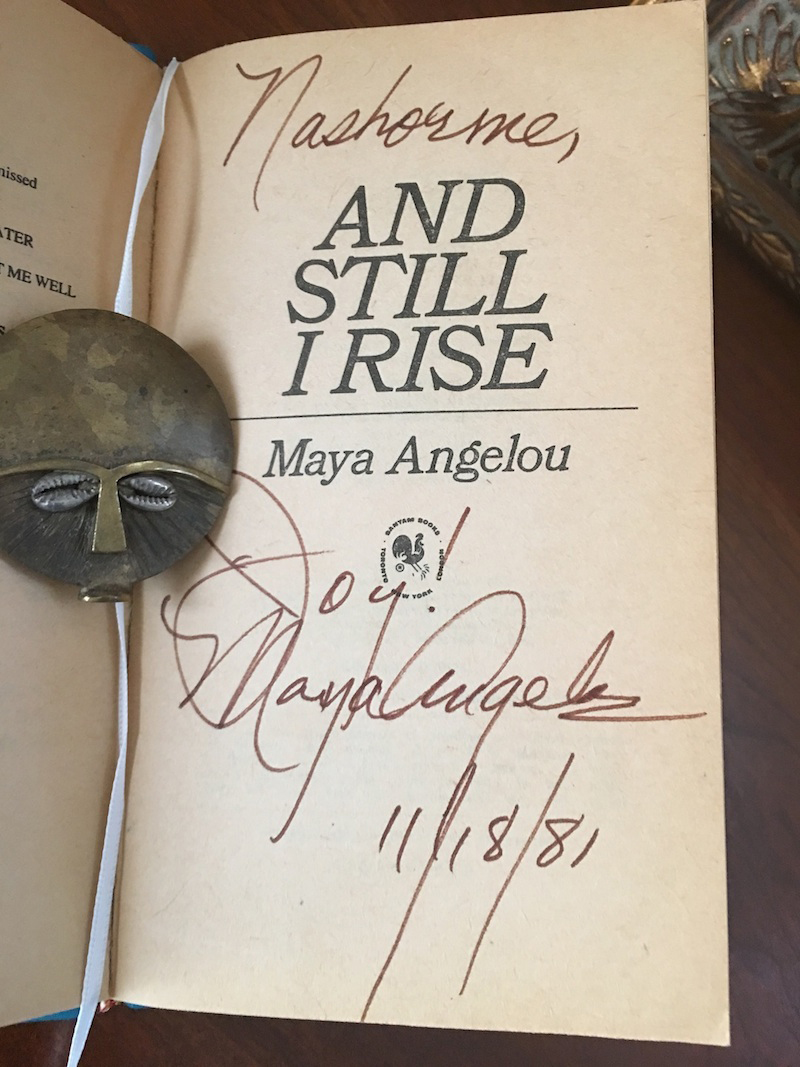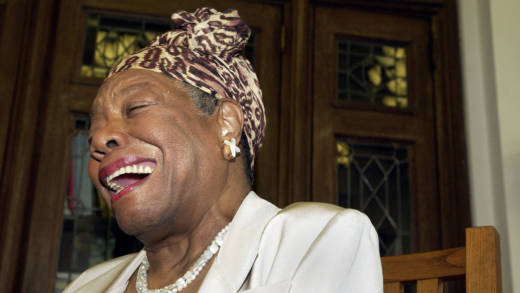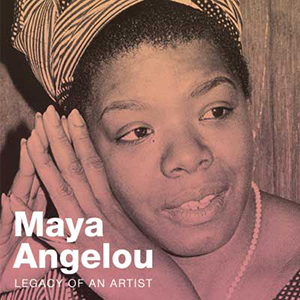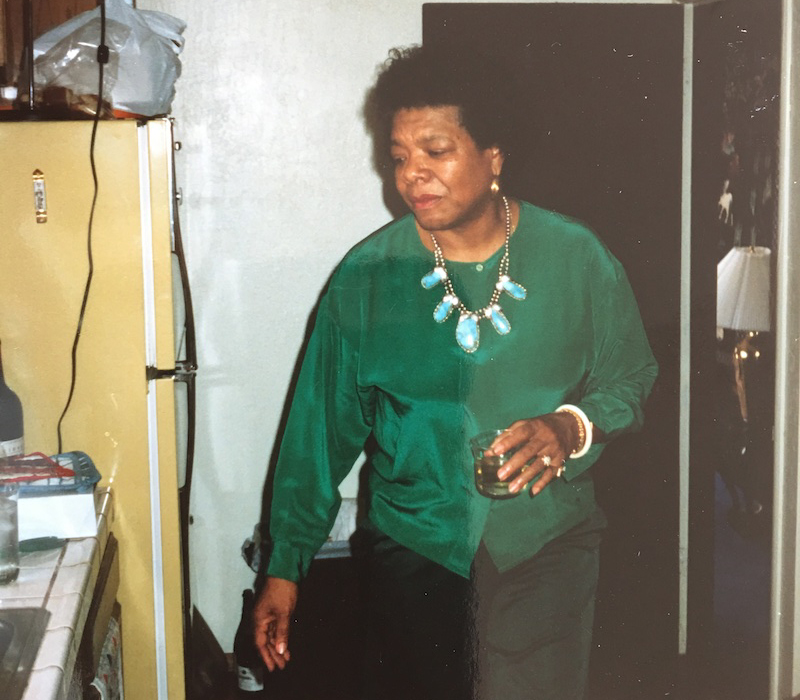While a sophomore in high school, one of my best friends sent me a letter. It contained just two sentences:
You have got to hear a song called “Grandma’s Hands,” by Bill Withers, and you’ve got to read I Know Why the Caged Bird Sings, by Maya Angelou.
At the time I was working at Hakim’s Bookstore in Philadelphia, so I immediately got a copy of the book. I was struck by just how much I related to this little Black girl. I felt I knew her. I cared about her story. It was so affirming. This began my love affair with the writings of Maya Angelou. I read everything she wrote, voraciously.
I met Dr. Angelou several years later, in 1981, when she was a featured writer in a Black Literary series at Philadelphia’s Afro-American Historical and Cultural Museum. Eleanor Traylor had put together an amazing roster of great writers, including James Baldwin, Gwendolyn Brooks, John O. Killens, Amiri Baraka and Sonia Sanchez. I brought my little paperback copy of her book of poetry, And Still I Rise. She signed it for me, leaving what I’ve since learned was her trademark: “Joy!”
The next time I saw Dr. Angelou, I was in the live audience during a televised appearance she made on the Maury Povich show in Philadelphia. There were two guests that day. The first, one, a vicious racist, is no longer living, so I won’t mention the name, but after he left, what followed was an amazing example of Dr. Angelou’s wisdom and brilliance.

After the segment was over, she came out and diffused the tension in the studio with a quote from the Afro-Roman playwright Publius Terentius Afer, also known as Terence: “I am human, and nothing of that which is human is alien to me.” She had nothing more to say about the previous guest. My friends and I were in awe at her calm, dignified demeanor.





